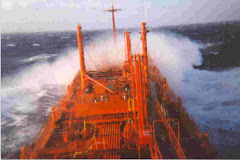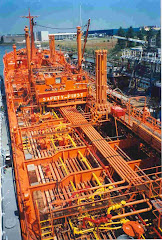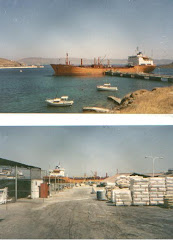We are now well into the fall season. The expected rebound in rates has been tepid. There is growing concern that the slowdown in global growth is structural and not temporal. Integration of economic activity across borders beginning to plateau. The vast pool of low-cost workers in China is no longer available and the credit-driven expansion cycle based on large state-sponsored infrastructure projects has reached its limits. In time, the impact on seaborne demand volumes and travel distances is likely to be profound. There may be a rise of regional production centers that shortens seaborne distances. Commodities prices are softening. Freight rates and secondhand prices may stay low for some years. Risk perception towards the shipping industry is changing, making it harder to raise money in capital markets. Investors playing a short-term asset game may find it difficult to exit with the expected profits.
My concern since the 2008 financial crisis is that the central bank policies of low interest rates, quantitative easing and flattening of yield curves is compressing risk premium and distorting asset pricing, which has been spilling over into the shipping industry. Weak commercial bank balance sheets have led to a zombification of the shipping industry, keeping lame-duck companies alive and second-hand prices artificially high.
Current shipping industry environment characterized by:
Current shipping industry environment characterized by:
- Deflation and weak demand, low profitability, frequent credit defaults and limited bank finance availability.
- An inflow of speculative money into shipping assets, searching for yield from resale at marked-up prices with a cyclical shipping recovery. ·
- Preference for new ordering rather than industry consolidation of existing tonnage since asset prices are not marked down and remain stubbornly high in relation to present earning capacity.
To sum this up, zero interest rates together with chronic shipyard overcapacity has caused an inflow of investment money into new building shipping assets exacerbating over supply of tonnage. Weak economic recovery and slowing growth in emerging markets does not generate sufficient increased cargo volume to absorb the tonnage overhang. This puts the shipping industry into a vicious cycle of prolonged secular stagnation.
The world shipping fleet age profile in bulk commodities dry bulk and tanker tonnage is composed of modern vessels and a dwindling number of scrapping candidates. Useful life of shipping assets is shrinking and ships are now going to the breakers at earlier ages. This has led to increasing asset impairment charges on older second hand tonnage that are highly unlikely to be recouped in current marginal freight markets. Buying older bulk carrier shipping assets is no longer a risk free investment secured by scrap value.
On the other hand, speculative orders of new tonnage in projects like Scorpio Bulk carries more risk than normally perceived because new building prices may begin to soften again in the next few years. The price of steel has been steadily weakening, making potential replacement cost lower. In the meantime, Scorpio Bulk efforts to develop a chartered fleet for an operating company prior the new deliveries has resulted in operating losses due adverse arbitrage and compressed earnings margins. New deliveries in a period of slack demand and softer replacement cost would create a perfect storm that no one in this venture was originally prepared.
Industry consolidation in mergers like the Oaktree-generated merger of Excel Maritime into Star Bulk is no industry panacea. This is a drop in the bucket in terms of the overall fragmentation in the dry bulk sector and does little to consolidate pricing power. The speculative new ordering at Star Bulk in open employment positions offsets pricing power.
This is an operation - like Scorpio Bulk - with a highly concentrated position in dry bulk shipping assets. Present returns on shipping
assets are low. Profit margins frequently cannot cover depreciation expense. The whole investment exercise depends on the degree and timing of a cyclical market recovery and sufficient financial liquidity to turn over the assets at marked up prices to lock in the capital gains profits on assets. No shipping investgment can make acceptible returns without asset gain on market uplift in future years.
Case in point is Scorpio Tankers - heavily exposed to the MR product tanker sector and underperforming with the eco-ship argument - where the only appreciable profits have been capital gains from VLCC's sales and potential sale of the Dorian shares from the LPG sector, which has performed well this year.
There are pockets of better quality shipping business in the tanker sector and specialty trades like gas shipping. But there always hangs the Damocles sword of shipyard over capacity where earning margins can be put under jeopardy with new ordering that quickly leads to softening of freight rates. We have seen this in the LNG sector very recently. Rates are beginning to soften in the LPG sector after a very good run this year.
Sentiment on shipping risk is changing. Capital market deal volume for shipping transactions is down from last year’s levels. Investment groups have moved on to other sectors. There is increasing discussion about how institutional investors are going to divest of their present shipping holdings in the current climate and how the expected mark up in asset prices for a cyclical shipping recovery may disappoint.
I have long been skeptical of how this would ever work on any scale to repeat the boom years, not only because of the changed macro-economic conditions with slower Chinese growth rates and chronic ship yard overcapacity, but also because of the finance gap in the banking market needed to facilitate sales at higher prices. What is required is greater demand and exit of the present deflationary environment.
This is still a work in progress for policy makers and central bankers struggling with an increasingly restless public!








